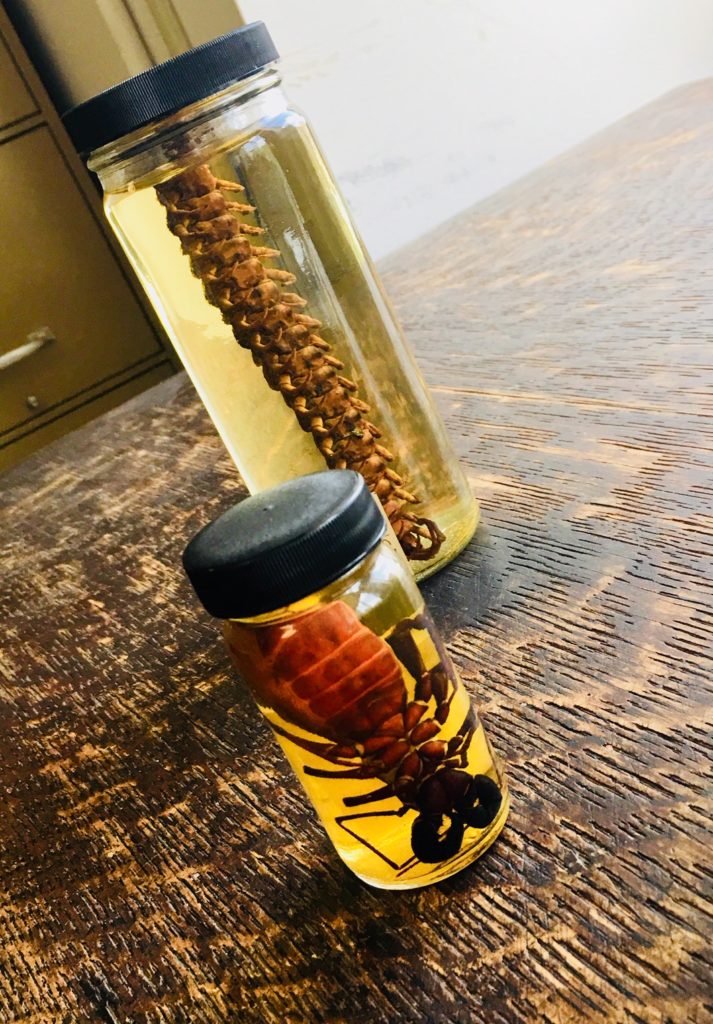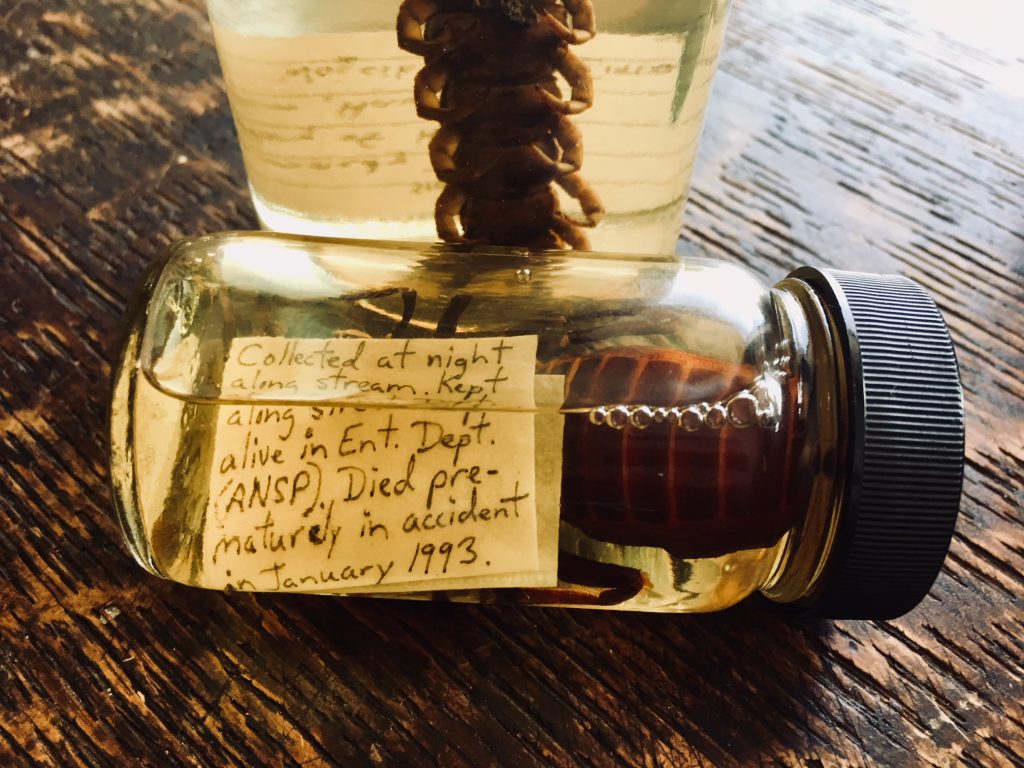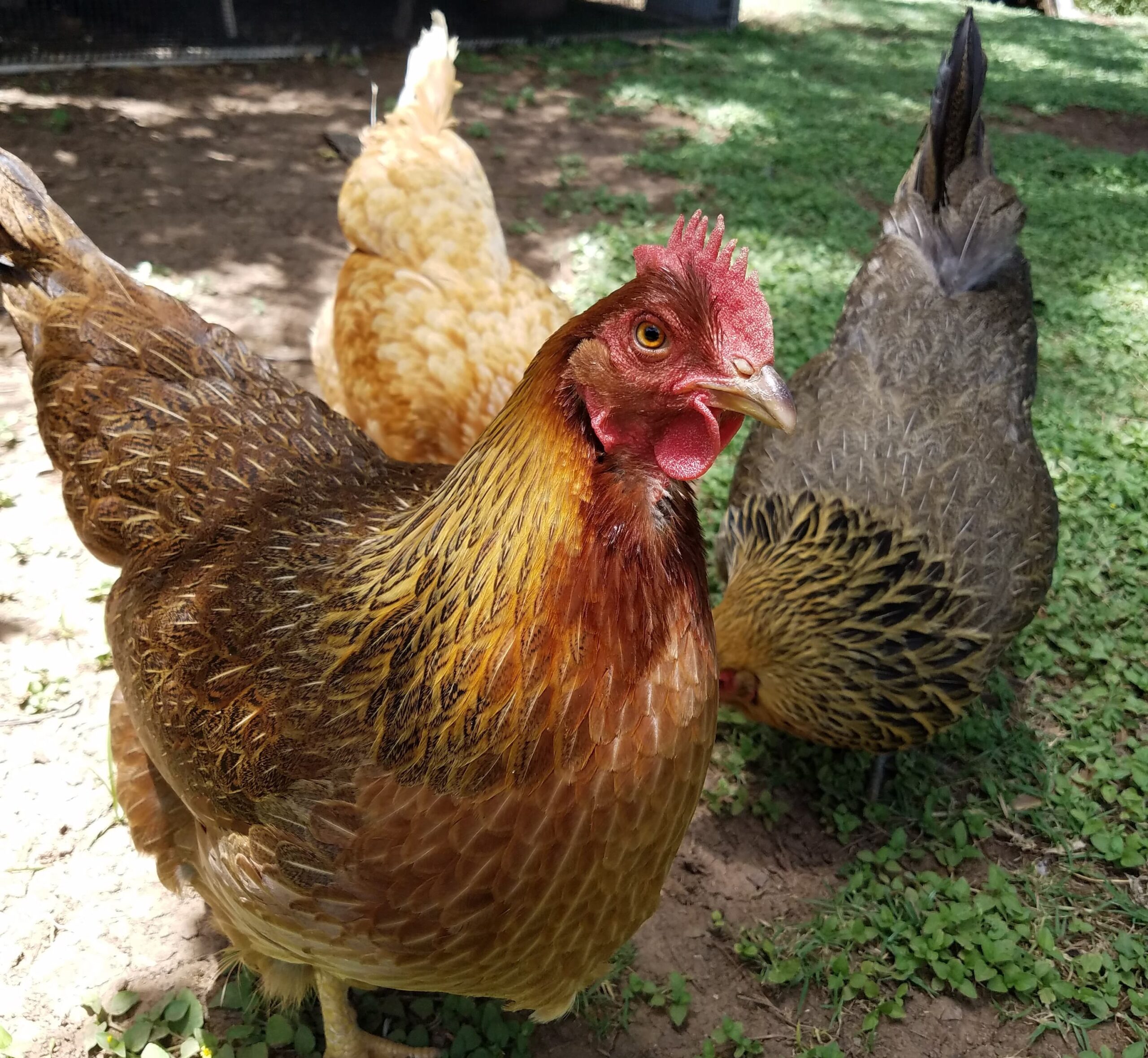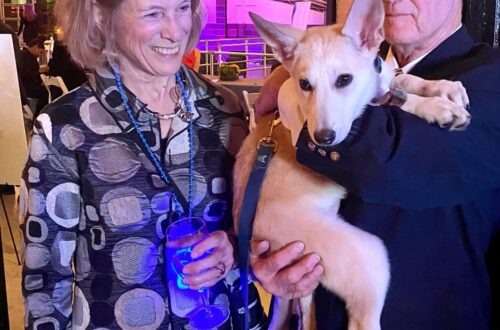
Animatronic ‘Xtreme Bugs’ Invade Philly’s Academy of Natural Sciences at Drexel University

Sleep tight! Not on your life with this bed bug … imagine that bite.
“All the winged creatures I have loved!” — Victor Hugo
Story, photos by Sharon Kozden
Back in the day, I recall hearing terrifying reports of killer bees on the loose and headed in our country’s direction. Alerts about their imminent arrival were as ubiquitous throughout my youth as were Judy Blume YA (young adult) books. My vivid imagination even decided these bees were specifically targeting me. I envisioned a swarm descending without warning and when least expected. Ironically, I have no idea to this day if those dang bees ever did come ’round.
Just when I thought I’d escaped a potential insect infestation, fast forward to adulthood, specifically May 23rd, when 20 humungous animatronic invertebrates did descend … on the Academy of Natural Sciences at Drexel University. The exhibit, known as Xtreme Bugs (sponsored by Western Pest Services and generously supported by VWR Charitable Foundation), began with a media preview. I met my fellow press peeps at the appointed time outside of the Academy, where all of us were fascinated by a huge Orchid Mantis (Hymenopus coronatus). I wasn’t frightened (pink is such a terrifying color, innit?), as it was stationary and protected by a metal barrier. “It’s just standing there,” I recall thinking. “What good is it?” Apparently, I don’t know my animatronics (“mechanized puppets”) because the massive creature all of a sudden began to hiss and gesticulate, and I don’t mean with a polite wave. That thing was creeping me out with its movements, triggering my girlhood killer bee fear-factor.
President and CEO of the Academy Scott Cooper arrived to address the gathered crowd and diverted our rapt attention from the Mantis. Providing engaging background- and detailed information about the exhibit, I became really excited to view “what lies within.” In we went then dispersed, wide-eyed and eager to linger at each beautifully lighted and staged bug station. The lighting lit its subjects with fantastic and brilliant colors; each riveting display presented a somewhat surreal but always enthralling appearance. I circled the exhibit twice, remaining the first time to absorb details, then repeat-rounding to photograph what had now become endearing critters. With a quick and gentle touch, I even befriended the bed bug. Although not as dramatically lighted as the others, the bed-bug scene became my favorite display because of its realism. Carolyn Belardo, Academy Director of Communications, was immensely helpful, offering suggestions and tips on how best to navigate the exhibit.
The twenty-count ginormous insects, many of which move, hiss and click-clack include a monarch butterfly, a Madagascar cockroach, an 18-foot squirming centipede, a bed bug out for blood, the Orchid Mantis, stink bugs, lady bugs and more. The sheer size of these arthropods allows visitors to learn even more about that which exists within our natural world. According to Academy President Cooper, ” … we can also learn a lot about their extreme behaviors and the physical characteristics that allow bugs to thrive and survive.” Additionally and while the displays are fronted by casual roping, other interactive options are present. Kiddies can don buggy costumes, absorb facts from please-touch signs and stand inches away from an actual scorpion crawling along the hand of one brave museum staffer. These games and more are designed to teach why, as Jon Gelhaus, PhD, an entomologist and curator of the Academy’s “world class insect collection” explained, “insects are so important to our lives … pollinating most of our food crops, giving us honey and silk, keeping pest insects and plants in check and breaking down leaves into soil.”
Just when I thought I’d seen it all vis-à-vis the exhibit, the curiosity factor escalated with what appeared a simple plate of delicious-looking cookies. I was more than ready to snag a few. There was a sign before the plate, pointing out some of the ingredients … ones no pantry should be without (read: ants, crickets, grasshoppers and silkworms). The fabulous 12th St. Catering had done it again with their creative and occasion-specific buggie cookies for the sampling! How much instigating fun would it be to offer one to someone, then and only after they’d eaten the last crumb, mention the stated “special” ingredients? Tee.
After the animatronics portion of the exhibit, yet another adventure awaited the press posse. We were invited to tour the fourth floor with resident entomologist Greg Cowper as our guide. According to a handout I grabbed, the insect collection “contains more than 3.5 million specimens, representing 100,000 species and 11,000 primary types. Researchers around the world use the collection to study how to tell different insects apart, to discover new species, to understand insect biology, ecology and evolution, and to understand changes in habitat and climate due to people’s activities.” You must see to believe the walls filled with voluminous sliding drawers where the insects are stored. Nosing around the entomologists’ office areas, I couldn’t help but laugh at what could be another exhibit in its own right: collectibles, curios and desk tchotchkes representative of their field of study.
Even if you’re not the biggest fan of invertebrates, this exhibit really does have something for everyone. Viewing these buggers in surroundings mimicking their natural habitats depicts a fascinating aspect of our natural world. If you’re too squeamish, go just the same and consider it a form of aversion therapy. If you can handle these oversized insects, an average household spider or cockroach encounter won’t faze you-just as I’m am now nonplussed by the notion of those heretofore dreaded killer bees.
For more information about the exhibit and future events, visit www.ansp.org.

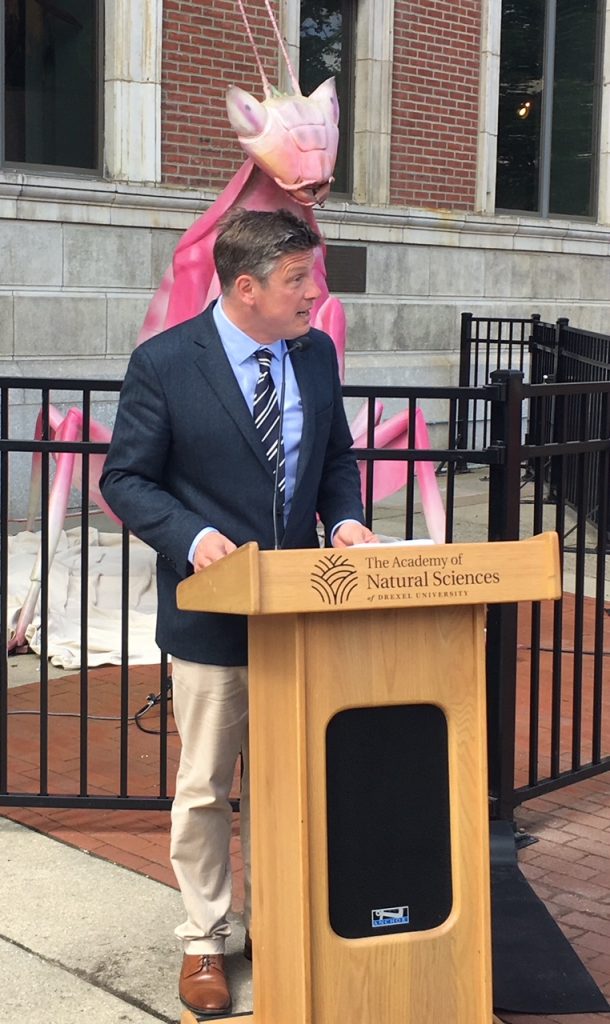
Scott Cooper, PhD, Academy President and CEO, addresses the crowd awaiting entry. You know what they say: two heads are better than one.
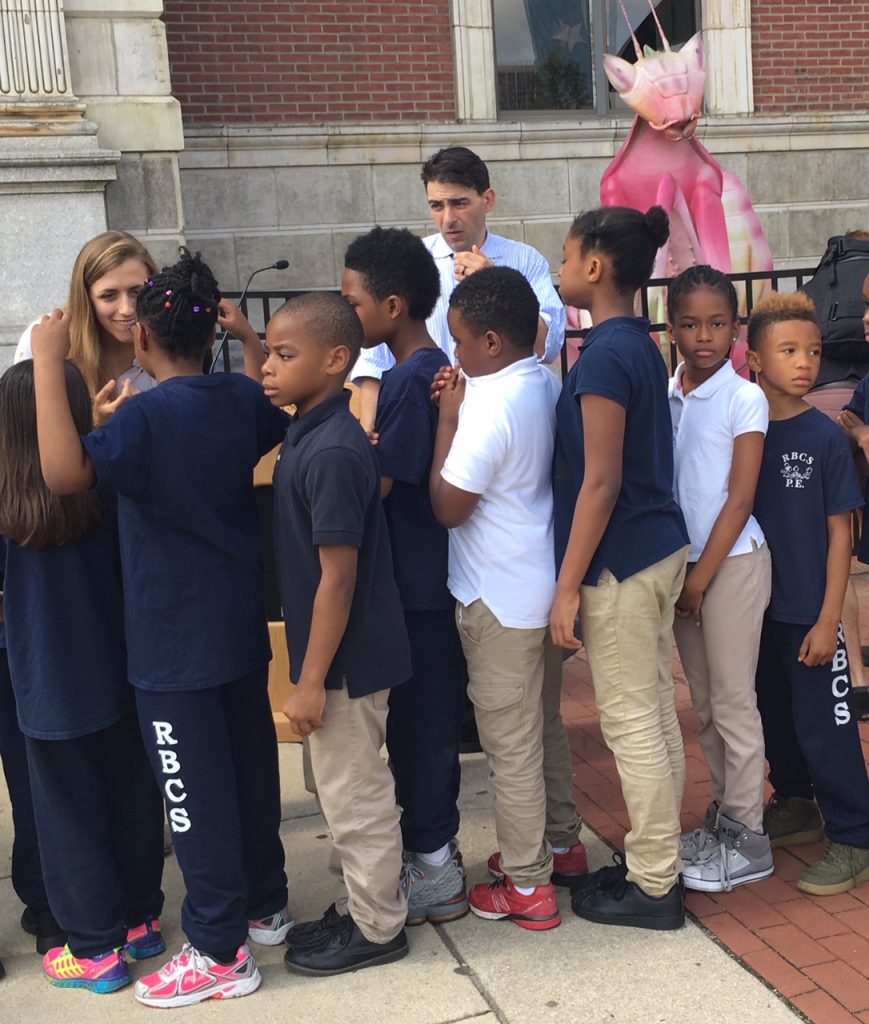
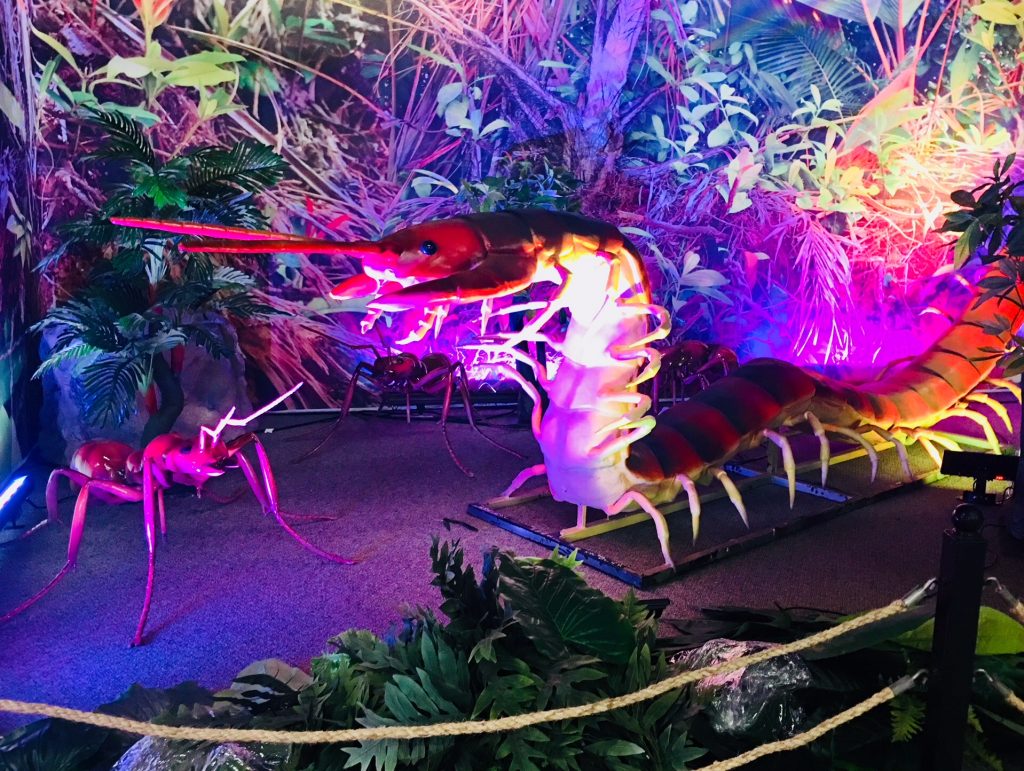
Wiggle-watching an 18-foot centipede.
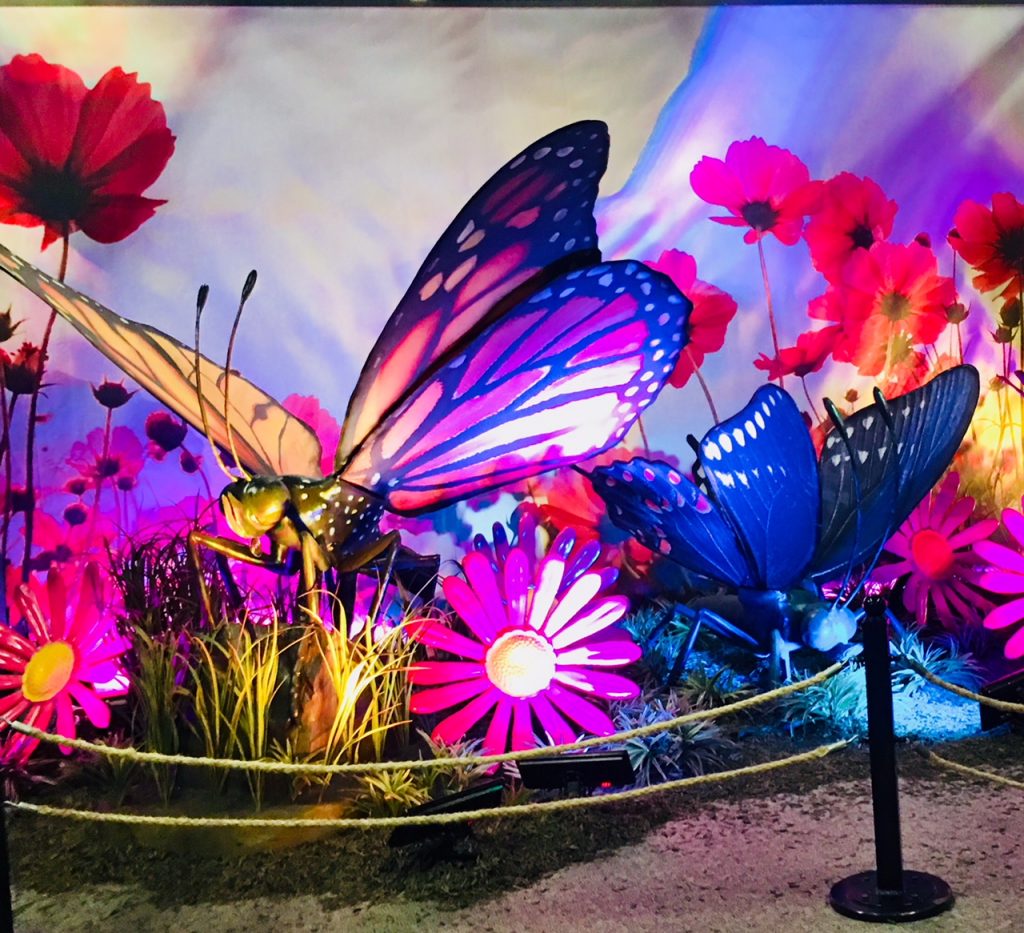
Apropos of whatever, the Spanish name for butterfly is “mariposa.” Pretty name to match equally pretty Monarch butterfly display.
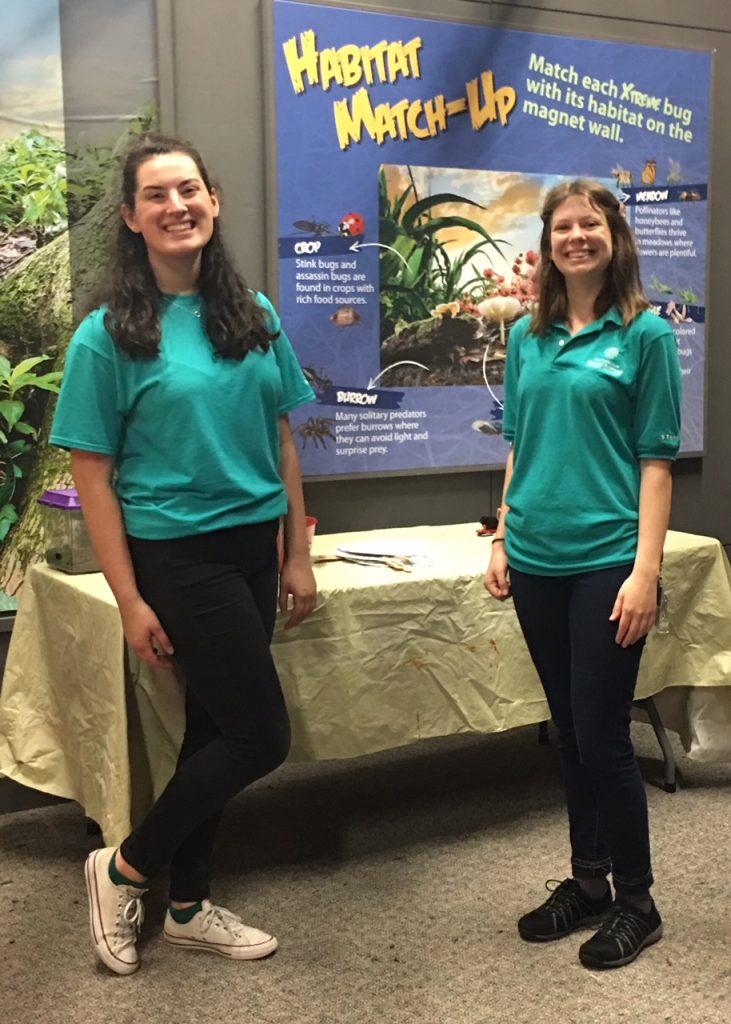
Super-happy staffers eager to share their “all things bug” knowledge.
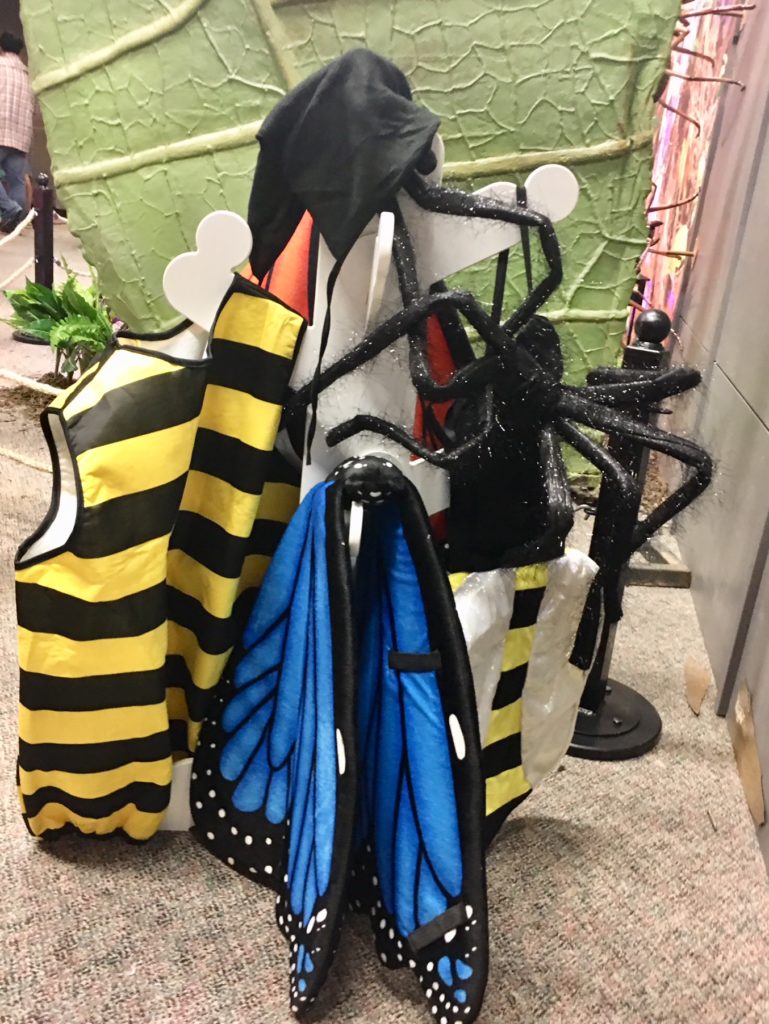
Thematic and theatric costumes for the kiddies.
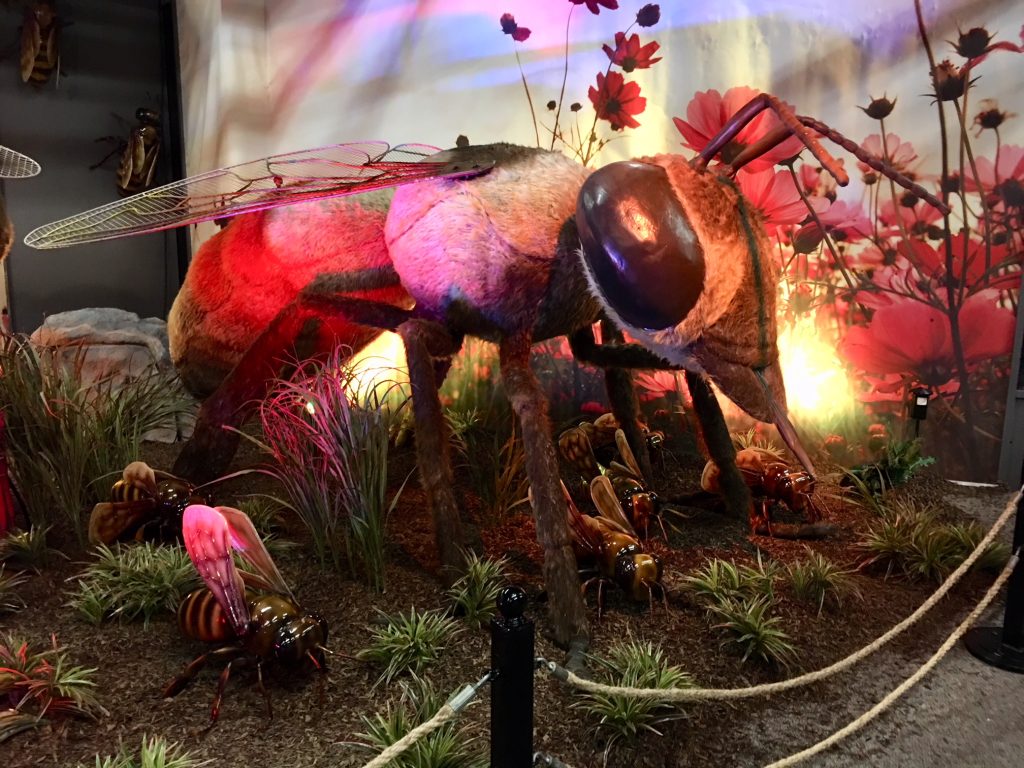
Giant Honey bee taking it all in. Thank goodness this hairy-legged buzzer is roped off for your protection.
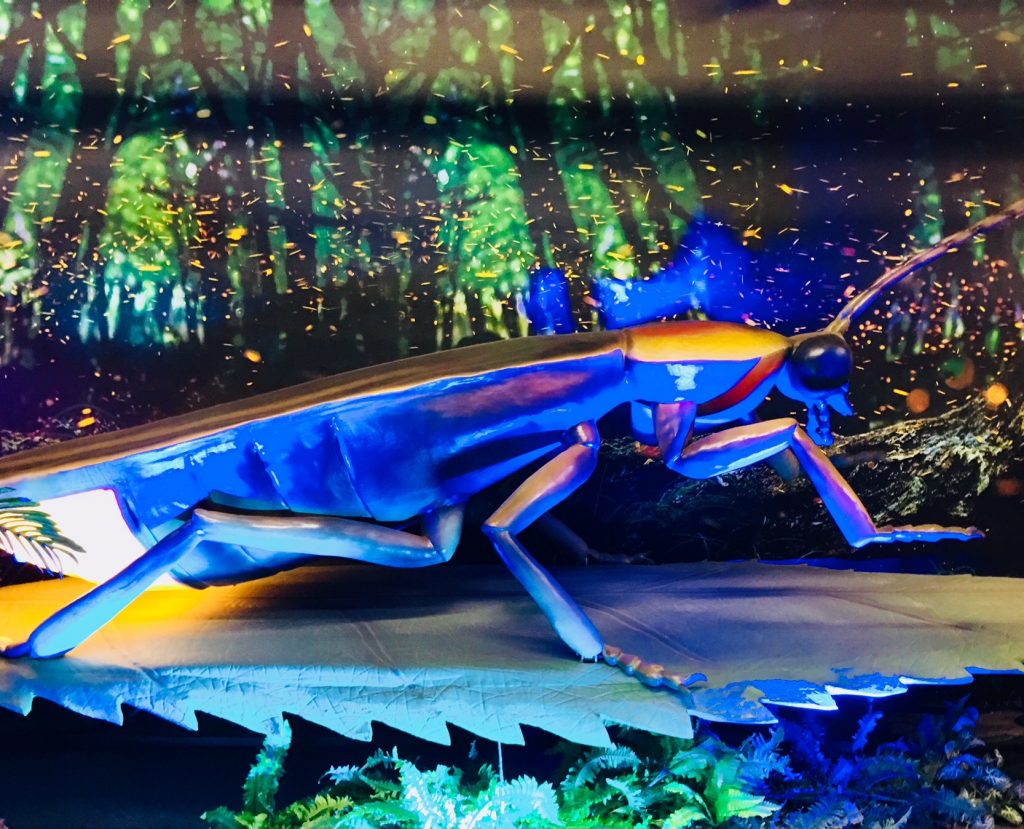
There isn’t a jar big enough to capture this firefly, lighted up because that’s just what fireflies do.
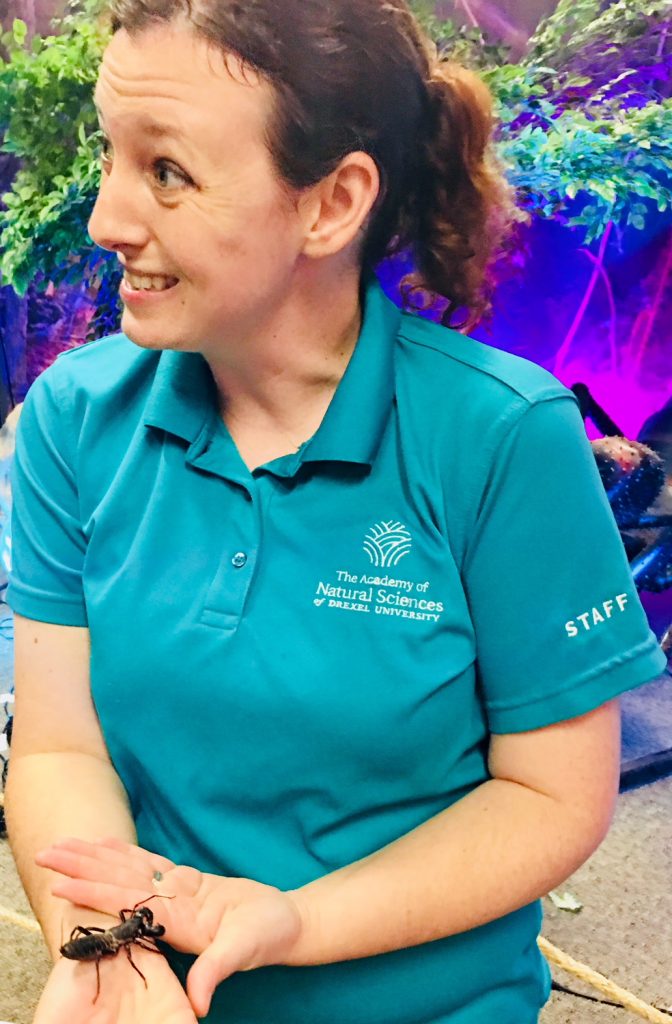
Karen Verderame, invertebrate specialist, displays a Vinegaroon scorpion to the curious. Not surprisingly, no one during my visit asked to handle it.
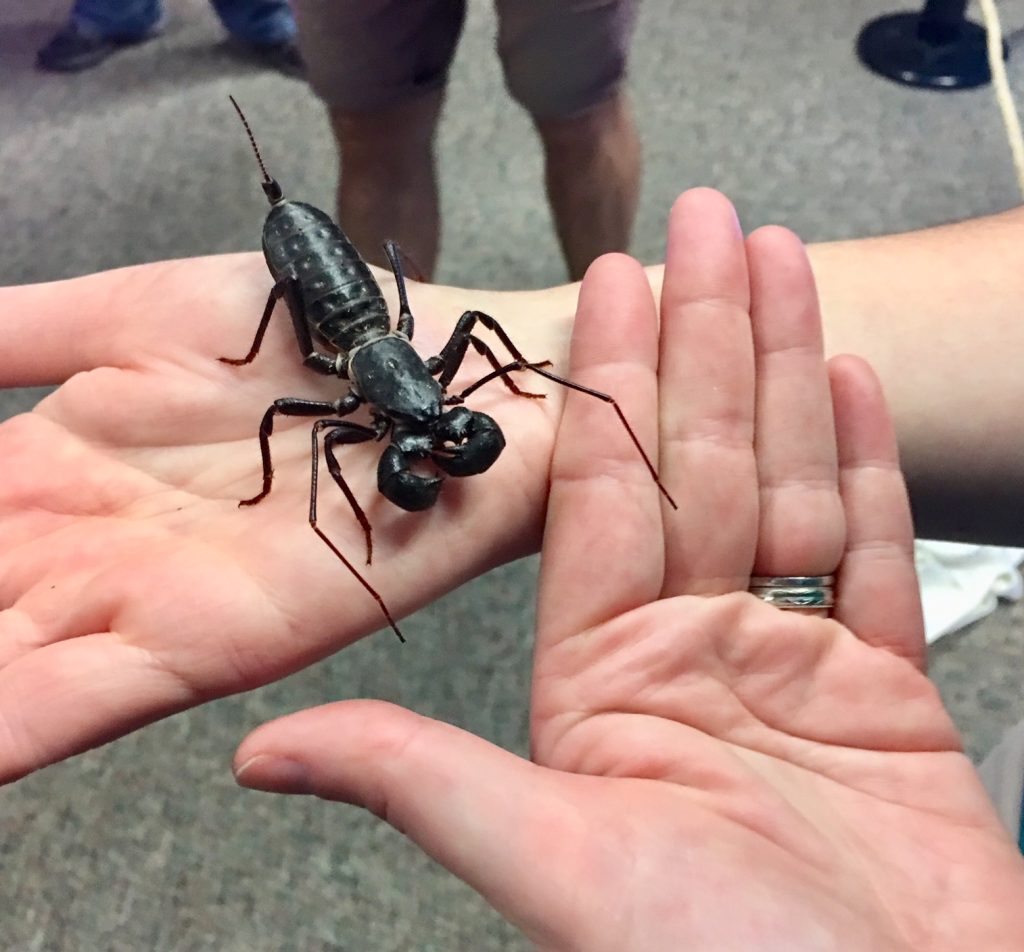

Moving beyond the exhibit to the bug “lab” on another floor, I happened on this gorgeous photo-worthy sign.

Scott Cooper, Academy President and CEO, with Sharon Kozden and “friend.”
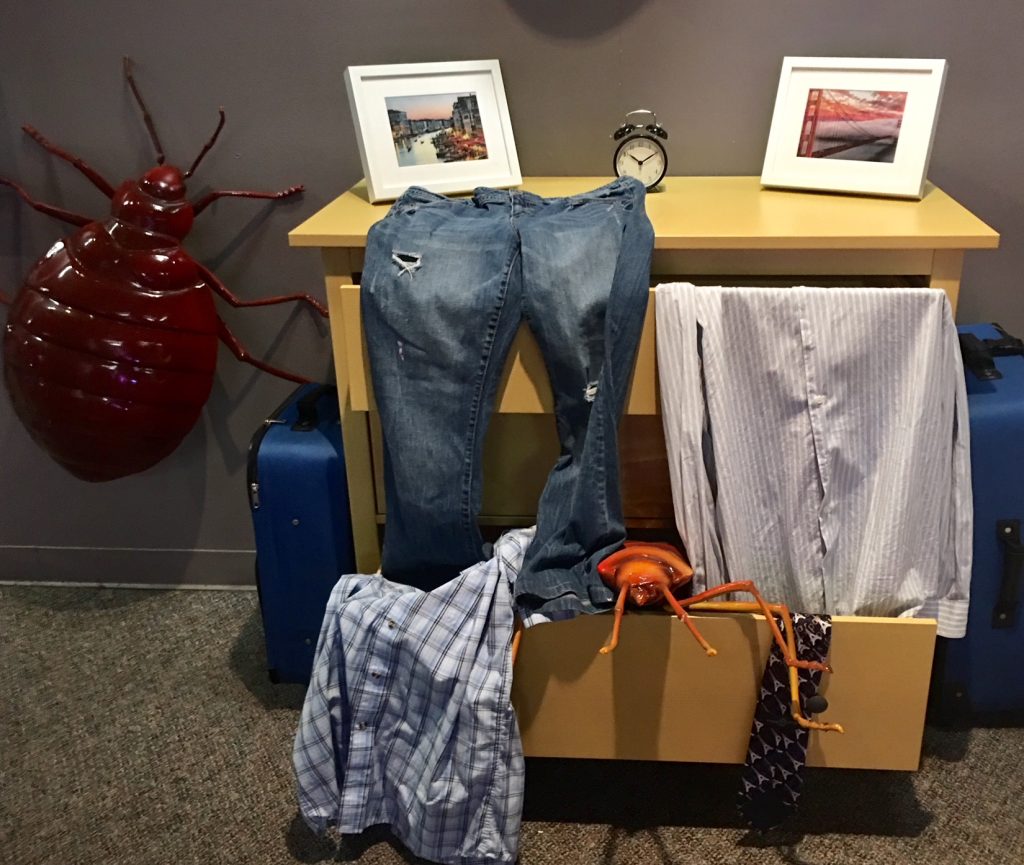

Check out those pincers. They mean business.

Could this be your worst nightmare? Or are you fascinated enough to move in closer to check out the extreme detail?

The adventurous in the crowd are given an opportunity to really, really show some buggy love. I was non-compliant.
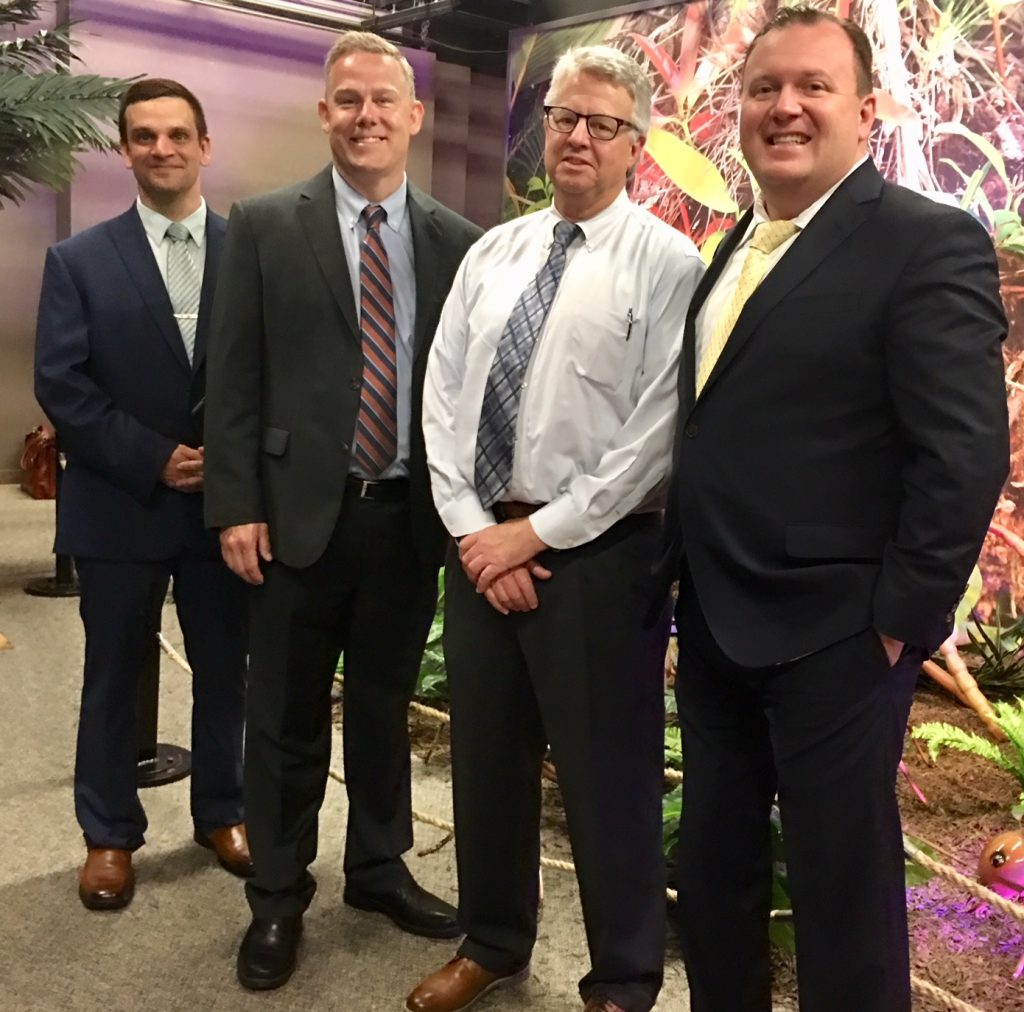
From Left, Shannon Sked, Western Pest Services Manager of Innovations & Continuous Improvements, Mark Bretz, Western Pest Services Vice President, Tom Mayfield, Western Pest Services Philadelphia Branch Manager and Will Webb, Western Pest Services Region Manager.
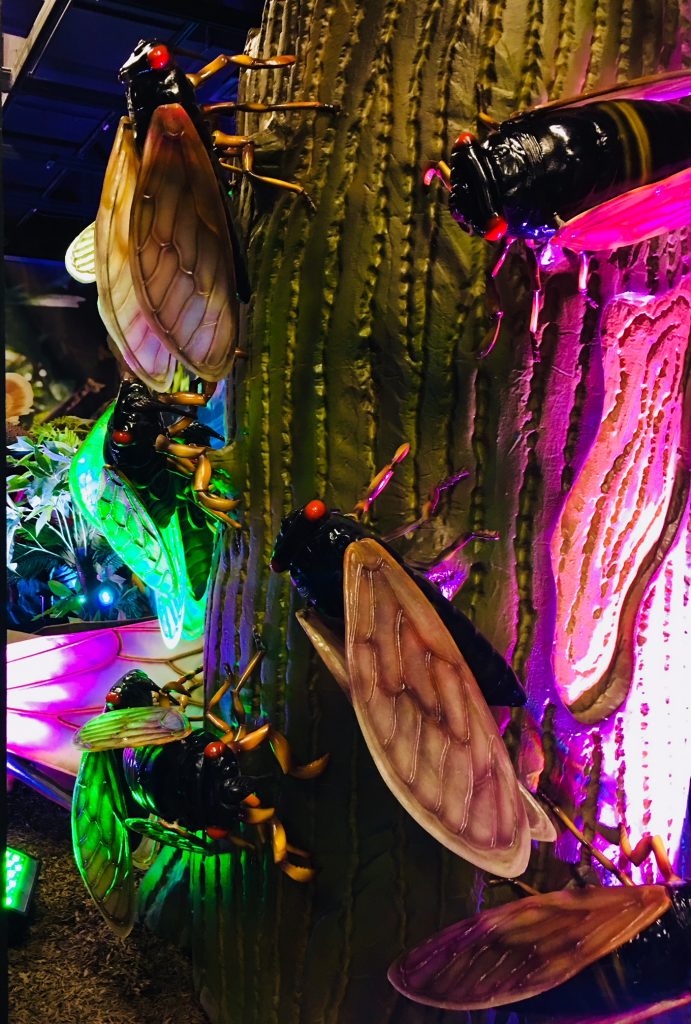
“All winged creature I have ever loved.” –Victor Hugo
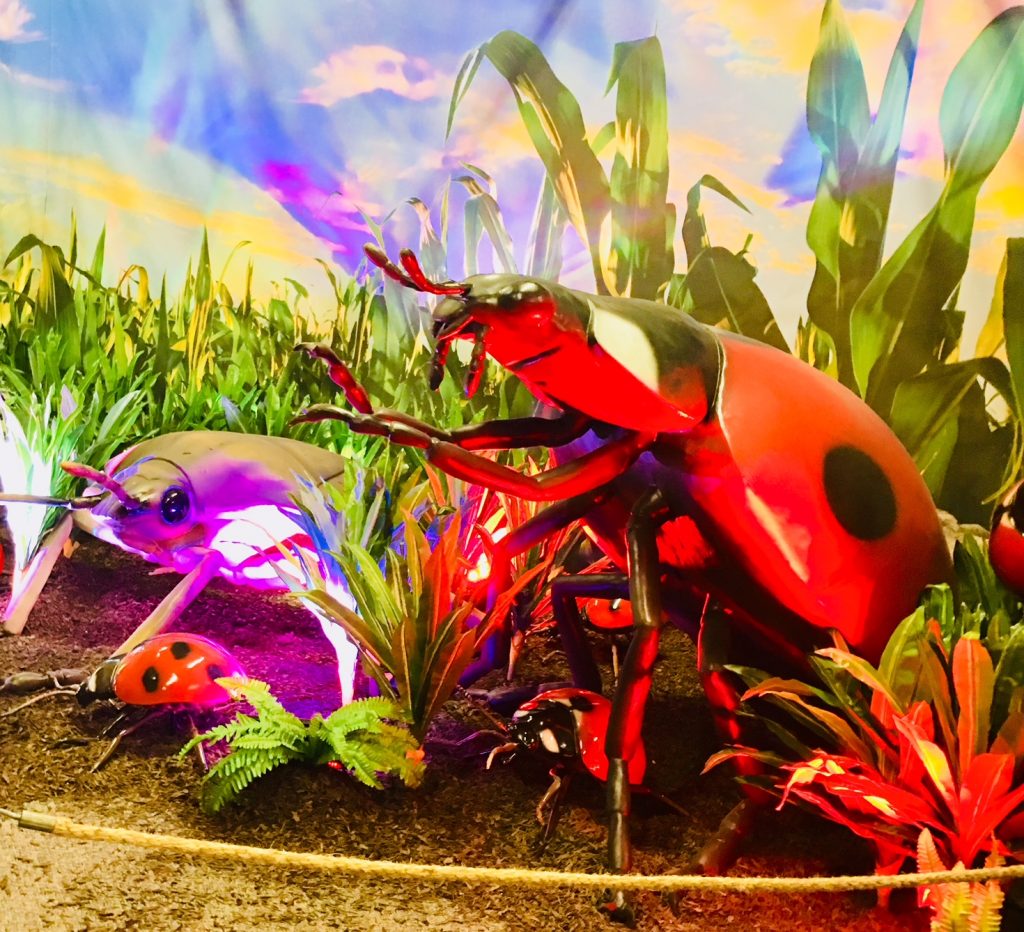
Stage left, a Brown Marmorated stink bug has got his eye on you … yes, YOU.

Rack ’em up. Just a sample of the many bug-preserving shelves we media members encountered during the exhibit’s preview’s tour.
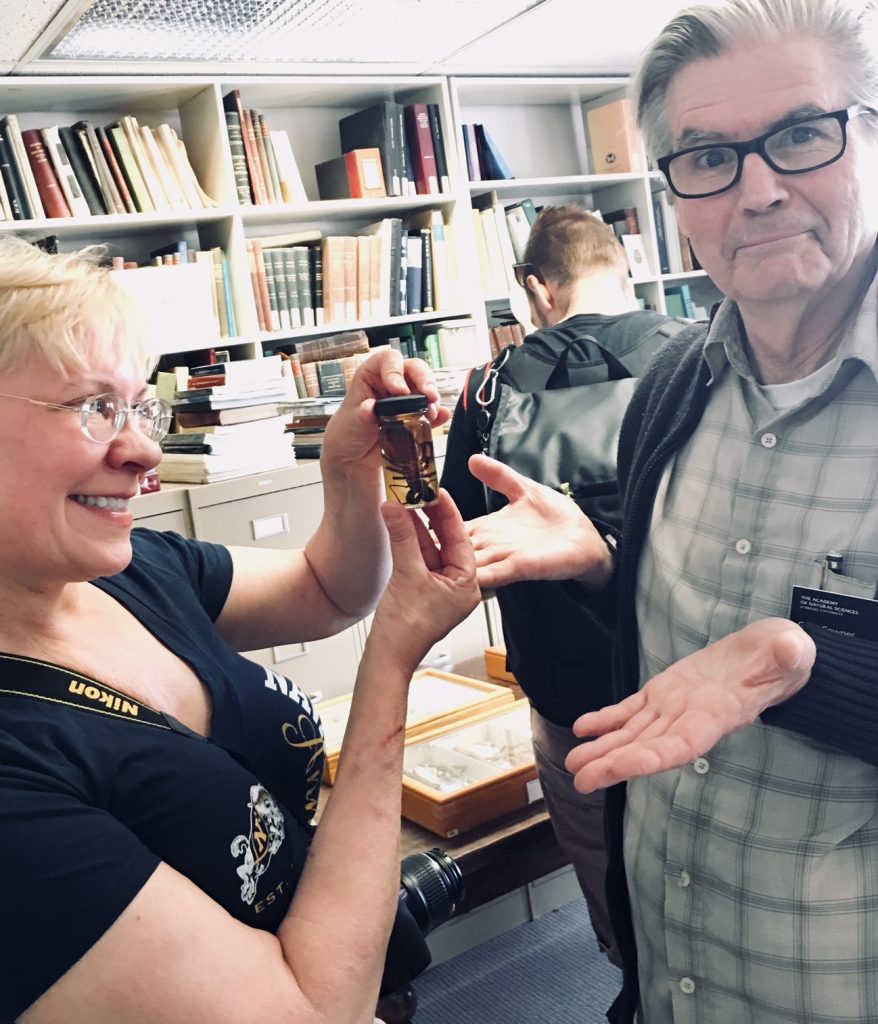
Greg Cowper, museum entomology curatorial assistant of the Academy’s fourth-floor collection showcases Sharon Kozden, who deftly dares to handle a fluid-encased specimen.



